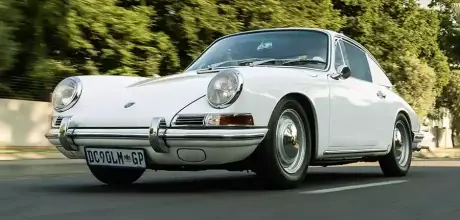Fully restored 1965 Porsche 911
We track down a fully restored 1965 Porsche 911, one of the earliest of its kind. Having celebrated 60 years since the first 911, what’s it like to drive in 2024?
Written by Wilhelm Lutjeharms
Photography by Peet Mocke
Driving an early 911
Wilhelm Lutjeharms climbs behind the wheel of a 1967 short wheelbase to find out what it’s like driving Porsche 911 genesis
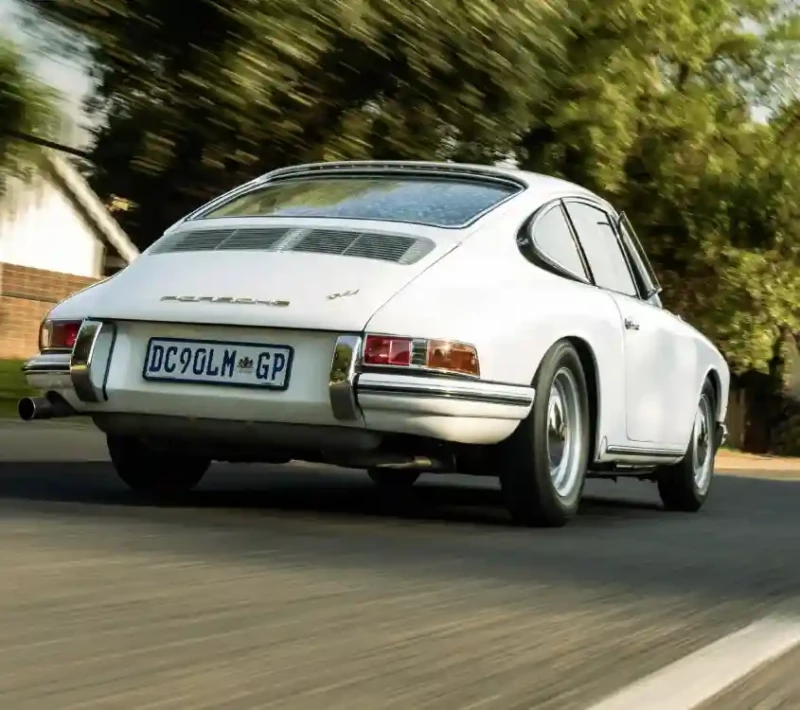
It doesn’t take long to realise the 911 is probably the only sports car that’s stayed close to its roots over the course of a full six decades. The engine has the same number of cylinders and is positioned in the same location in the car – just to name two elements. Of course, the car has grown (immensely) in size and never before has there been such a wide variety of new 911s on offer. Nonetheless, there’s a clear thread that runs from 1963 when the car was unveiled at the Frankfurt International Motor Show on 12 September, right through to 2024.
If you’re an enthusiast, it’s likely you’ve always had a level of curiosity as to how one of the very first 911s drive. Will it be fair to just assume these cars are slow and cumbersome, with terrible handling? Depends what you compare it to, because it was still successful in racing back in the day.
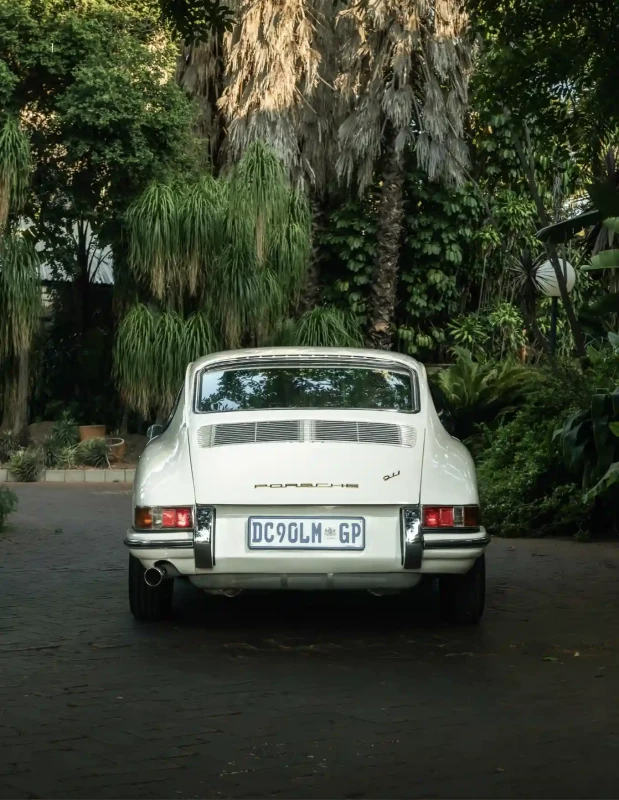
This 1965 Porsche 2.0-litre 911 has been with its current owner for five years. It’s chassis number 300757, and our research suggests it’s one of only two 911s in South Africa from 1965. The Certificate of Authenticity from Porsche states the only option on the car selected by the original owner was the heating system. It’s installed in the front and can only be seen when you lift up the carpet and open a small compartment. It makes sense, because the selling dealer was AMAG Suisse in Switzerland.
The owner found the car during the middle of the restoration at Bailey Cars in Johannesburg and immediately expressed interest in it. Following the restoration, the owner has been enjoying and perfectly maintaining the car. Both up close and from a distance, the car presents itself in a perfect, factory-original condition. At the rear is the gold-coloured Porsche script with “911” towards the right side. Flip the engine lid open and the clean, 2.0-litre capacity engine sits resplendent. The era before Fuchs wheels saw the use of 10-hole steel wheels – a wheel that was also used on the earlier Porsche 356.
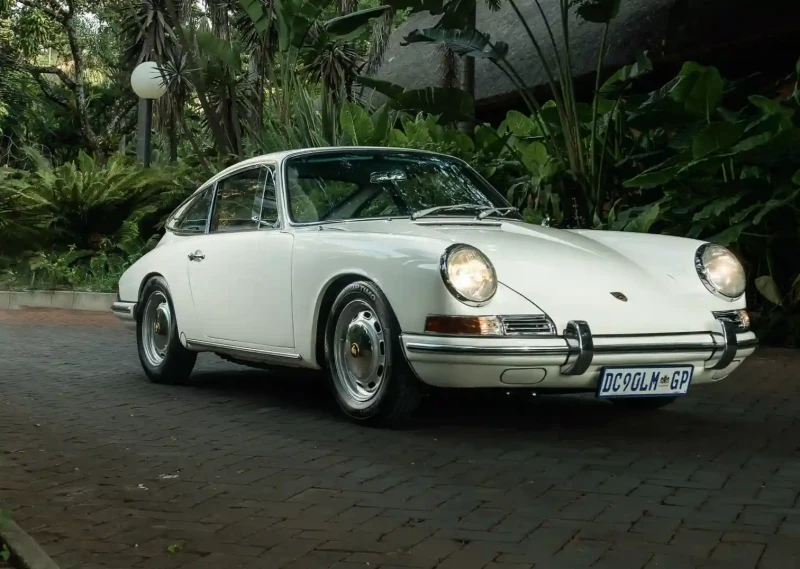
The owner keenly shares some thoughts about this specific car. “I think the 911 had a very subdued start, but the 356 had to evolve. It might have been similar to when the 911 went from air-cooled to the water-cooled 996 – originally a lot of enthusiasts weren’t very impressed. If you park a late 356 next to this 911, you’ll see the improvement it represents. Visually there are a lot of similarities, but you can also immediately see all the design changes.”
It’s hard to believe, but before this car was restored a previous owner was modifying it into Turbo-bodied 911. Thankfully, it ended up in the right hands who could preserve it.
“I always wanted an early 911,” the owner continues. “It’s the pinnacle of the Porsche brand. It was coincidently sold in Switzerland at the same company that sold my 356A. Originally, the owner of Bailey Cars wasn’t interested in selling it, but eventually we struck a deal. That happened in 2018. “Elements of the car that stand out for me is that original 2.0-litre, flat six engine. Then there’s this very basic, off-white colour that’s a strong reminder of the early 911s: that they were genuinely quite bland in terms of colour.”
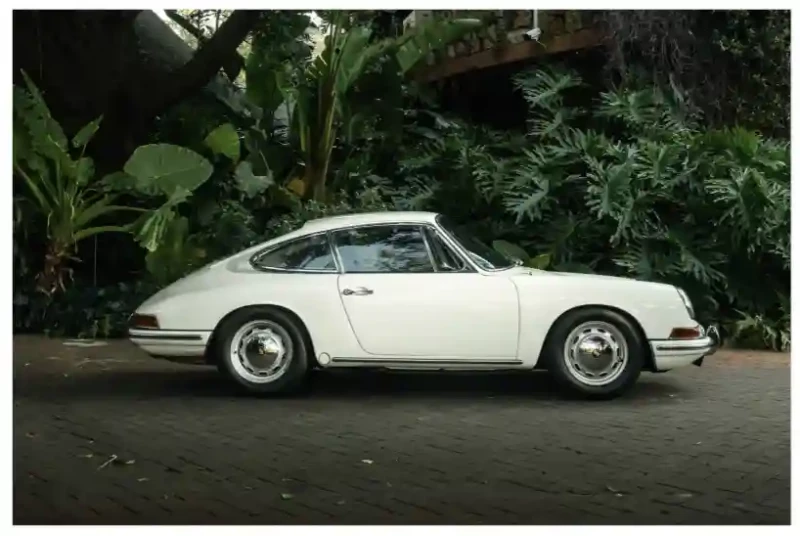
The first thing that grabs your attention is the small footprint the car has, which truly conveys the term “narrow body”. This is especially true when you walk up to it and lower yourself into the comfortable driver’s seat. The cabin is tight, and the car quickly feels like it’s wrapping itself around you. The visibility is great, because you have all the windows around you with only thin pillars to interrupt your view.
The cabin is a cosy and intimate space, for both the driver and passengers. The instruments are very basic, but you have the five round dials in front of you – such an iconic element of Porsche’s 911. The rev counter reads all the way to a redline just below 7,000rpm. In the centre of the steering wheel is the Porsche crest, and apart from the partially wooden steering wheel, there’s also real wood along the lower part of the dashboard. To my right (this is obviously a left-hand drive car) is the radio, and lower down is the bent gearlever for the five-speed, dog-leg manual gearbox. As expected, having been restored just a few years ago, the cabin is in perfect condition with a welcoming sense of simplicity.
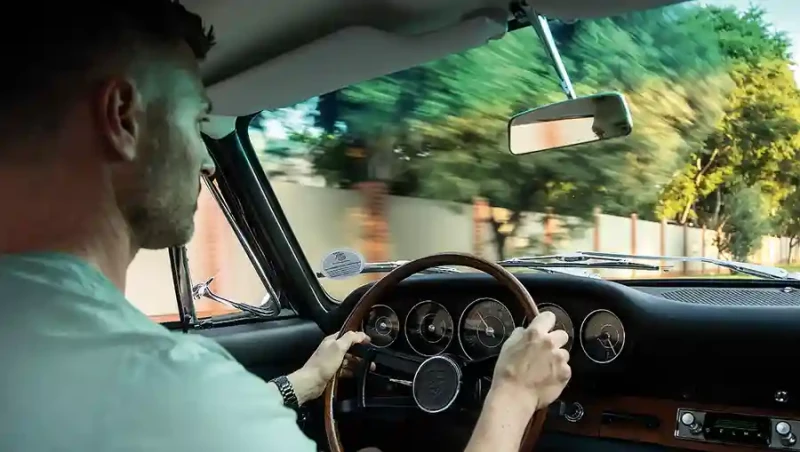
The large-diameter steering wheel has a thin rim and spokes, and there’s plenty of floor space by virtue of the fact there’s no transmission tunnel that would effectively bisect the cabin.
It’s important to remember these early days of Porsche, compared to the relatively large car manufacturing company it is today. In 1960, according to The Porsche Book by Jürgen Barth and Gustav Büsing, Porsche had only 1,250 employees, of which 172 engineers and draftsmen were deployed in the design office and 204 carried out experimental work. Back on the road and it doesn’t take long to get acquainted with the 911. To say it drives completely different to a late-60s or early-70s 911 would be wrong, but there’s a clear closeness that it has with some of the very last 356s. However, the view from the driver’s seat is typical 911: the bonnet dips down in the middle part and the two fenders from the headlights are clearly visible, indicating the front extremities of the car.
As with most Porsche, the boxer engine dominates the on-road experience. It can easily be driven calmly with the rev needle moving between 2,500 and 3,000pm. Changing gears is relatively effortless, especially once you’re out of first gear and can just shift up and down between second and third. These early transmissions can be tricky to operate if you’ve not driven an early 911 before. It only takes a few shifts to realise how easy it is to direct the bent gearlever through each shift up to top gear. You still can’t rush gearshifts as you would in a modern Porsche, but you can change up or down without worrying that you might miss a gear. It’s an easy car to drive, both at speed and at a leisurely pace.
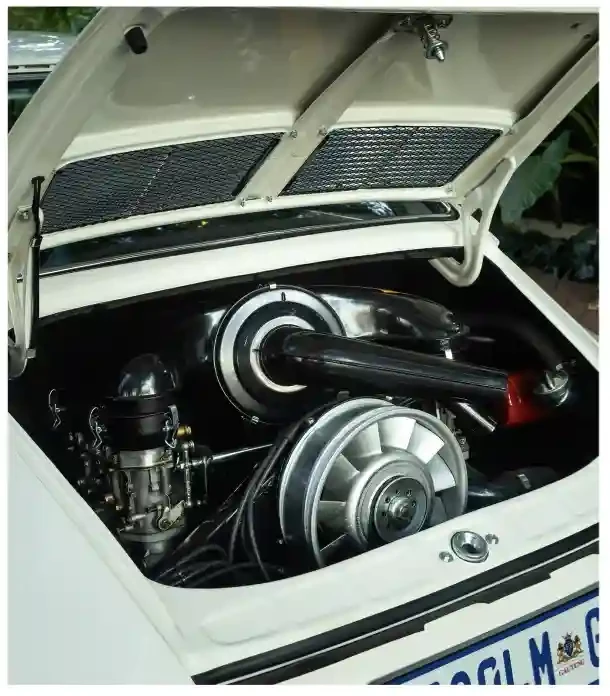
I quickly realise this car shouldn’t have to be driven sedately, as we’re often inclined to do with older cars. I pick up the pace and within a few moments I quickly understand why the 911 was campaigned in several rallies and other racing events – and achieved so many successes in a multitude of those contests. For a car of this vintage, the steering wheel is also quite sensitive to minor inputs.
Within the first few turns the lightweight and compact nature of the 911 presents itself. The fact things happen slowly in and with the car, enables you to spend more time appreciating the steering feedback, the balanced suspension and the willing engine. Even from 3,000rpm the engine is eager to rev and past 4,000rpm even more so. Although there’s still around 2,000rpm left, I change shortly after 5,000rpm, leaving the traffic behind.
Because this is an extremely hot summer’s day in Pretoria, we have the front quarter windows open to direct air into the cabin while the two rear pop-out windows have been opened to enable the air to flow out the back. It does make a difference! The result is also that all your sensations are elevated in terms of the noise that enters the cabin.
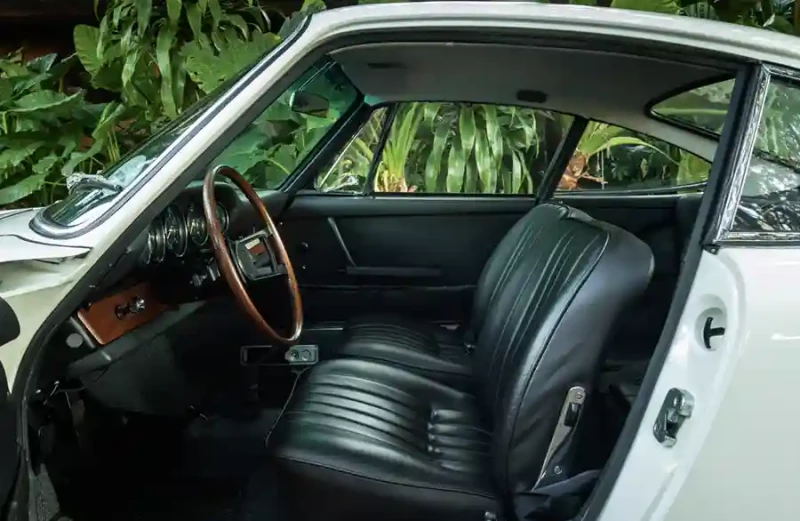
Apply the brakes and the 911 easily scrubs off speed, giving you even more confidence to drive the car in the way it was intended. On a busy road, driving this car to its maximum cornering capability isn’t an option, but period reports do point out to its on-the-edge handling times. A few years later, in 1969, the start of the B-Series production kicked off, when these cars’ short wheelbases were increased by 57mm, improving the limit handling.
Even though it rides on plump, modestly sized tyres (165/80 R15, front and rear) the 911 changes direction with conviction and relatively little body roll. Overall, it’s a much more settled and involving driving experience than I expected. Thinking of the driving dynamics of some other European cars at the time, it’s evident that the 911 was one of the best sports cars, and that’s remained the case ever since. Because the 911 tips the scales at only 1,080kg, there’s an honest level of enthusiasm from the engine that can certainly bring a smile to your face as you put the flat six through its paces. The claimed top speed of this model is 131mph, which sounds a tad ambitious today, but it could just be achievable in the right driving conditions.
Porsche quickly made some updates after the launch of the 911. Looking at the engine bay, it’s clear that if you compare this car to the pictures of the original launch model, the air intake system was changed, for example.
This first-generation 911 is a true classic in every sense of the word. Whether you’ve driven or owned a 911 from even 15 years later, you’ll feel at home in its cabin and recognise the driving experience.
With all the wonderful technological elements that modern 911s offer, it’s at the same time understandable why retro-, outlaw and restomod 911s have such a notable following by enthusiasts globally. There’s just something missing for some of us when it comes to new cars.
A lot more information, maintenance know-how and effort is needed to enjoy these older cars, but then again that’s surely part of the ownership experience. Needless to say, it’s because of these first 911s that today we can enjoy some of the best sports cars on the planet.
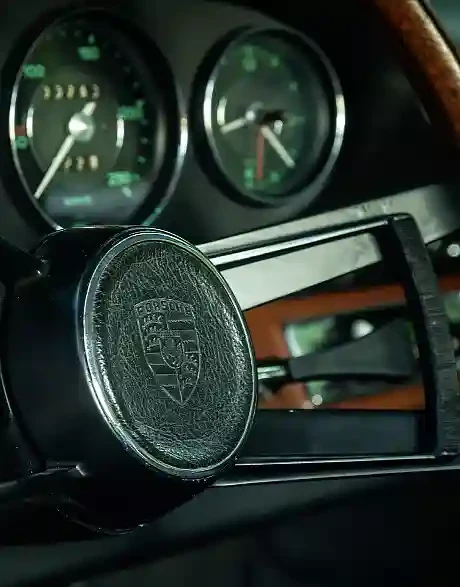
ABOVE The unmistakable side-profile of the 911 has been echoed in subsequent generations over 60 years.
Technical data1965 Porsche 911
- Model 911 2.0 SWB
- Year 1965
- Engine Capacity 1,991cc
- Compressionratio9.0:1
- Maximum power 130bhp @ 6,100rpm
- Maximum torque 174Nm @ 4,200rpm
- Transmission Five-speed manual
- Suspension Front McPherson struts;torsion bars; anti-roll bar / Rear Torsion bars; trailing arms;anti-roll bar
- Wheels & tyres
- Front 4.5x15-inch; 165/80 R15
- Rear 4.5x15-inch; 165/80 R15
- Dimensions
- Length 4,163mm
- Width 1,610mm
- Weight 1,080kg
- Performance
- Acceleration 0-62mph 8.7 seconds
- Top speed 131mph
“Within the first few turns the lightweight andcompact nature of the 911 presents itself”
ABOVE Early 911 engines were fitted with Solex carburettors.
ABOVE This early 911 rides on 10-hole steel wheels – a holdover from the previous 356 – measuring just 4.5-inches wide.


